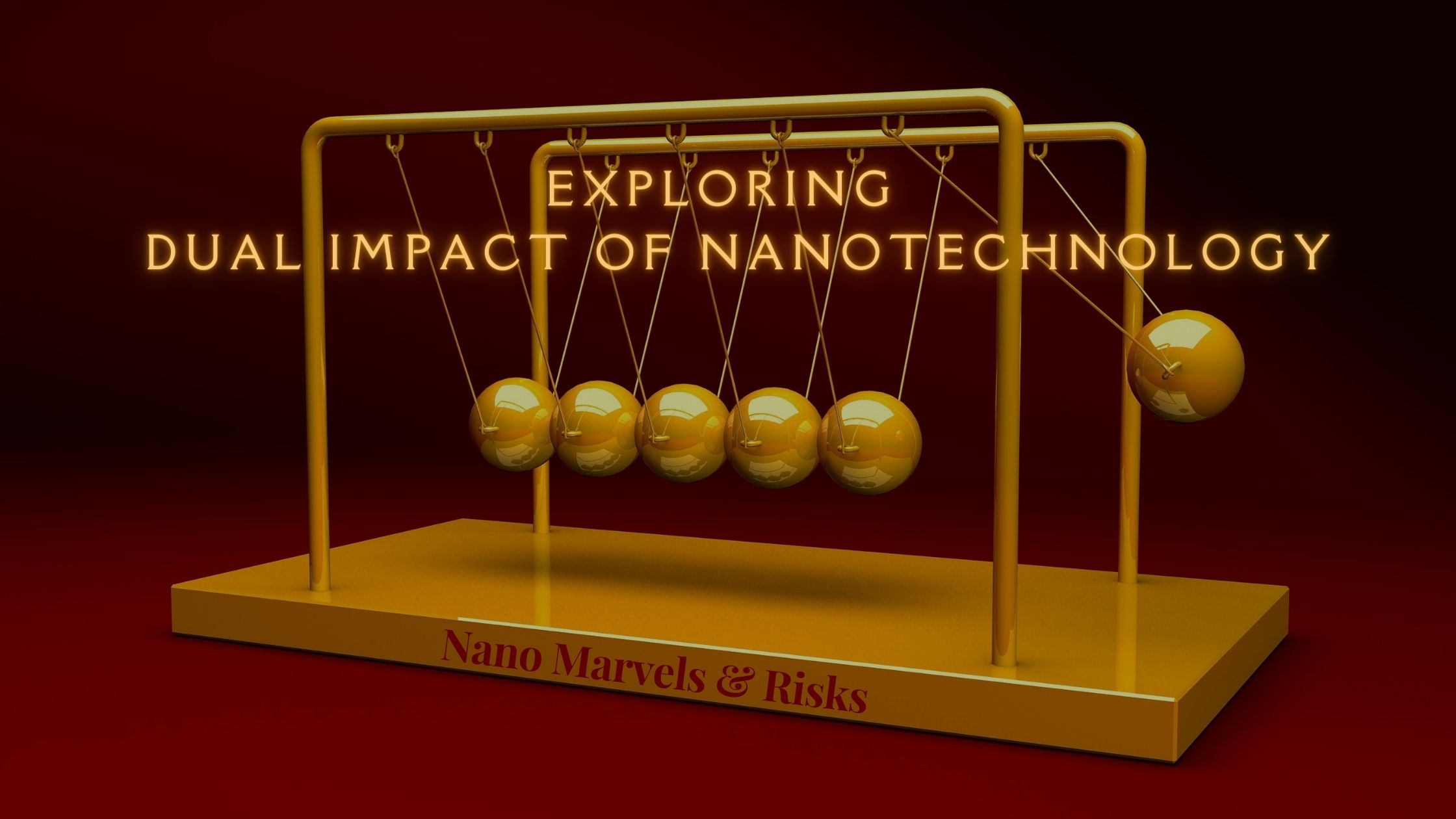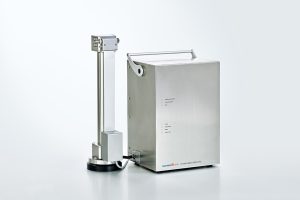
Nano Marvels and Risks: Exploring the Dual Impact of Nanotechnology
Exploring the Dual Impact of Nanotechnology
Nanotechnology, the manipulation of matter at the nanoscale, has emerged as a transformative field with the potential to revolutionize various industries, from medicine and electronics to energy and materials science. As scientists delve deeper into the realm of nanoscale engineering, it becomes crucial to assess and understand the multifaceted impacts of this technology.
Positive Impacts of Nanotechnology
Medical Advancements
Nanotechnology has significantly advanced the field of medicine. Nanoscale drug delivery systems, such as nanoparticles and liposomes, allow for targeted drug delivery to specific cells, minimizing side effects and maximizing therapeutic outcomes. Additionally, nanosensors enable real-time monitoring of physiological parameters, facilitating early disease detection and personalized medicine.
Environmental Remediation
Nanomaterials have shown promise in cleaning up polluted environments. Nanoparticles can be designed to efficiently remove contaminants from water and soil, offering a sustainable solution to environmental pollution. Moreover, nanocatalysts have the potential to revolutionize the field of green chemistry by facilitating cleaner and more efficient chemical processes.
Energy Efficiency
Nanotechnology has paved the way for more energy-efficient technologies. Nanostructured materials enhance the performance of solar cells and energy storage devices. This can contribute to reducing greenhouse gas emissions and transitioning to a more sustainable energy future.
Improved Electronics
The electronics industry has benefited immensely from nanotechnology. Smaller and more powerful electronic components, such as nanoscale transistors, have enabled the development of faster and more energy-efficient devices. This has led to innovations in computing, telecommunications, and consumer electronics.
Enhanced Materials
Nanomaterials possess unique properties that can significantly enhance the performance of materials used in various industries. For example, carbon nanotubes and graphene exhibit exceptional strength and conductivity, making them ideal for applications in aerospace, construction, and electronics.
Negative Impacts of Nanotechnology
Environmental Concerns
Despite its potential for environmental remediation, nanotechnology raises concerns about the environmental impact of nanomaterials themselves. Some nanoparticles may be toxic to ecosystems, and their long-term effects on wildlife and aquatic systems are not fully understood. Accidental releases of nanoparticles during production or use could have unforeseen consequences.
Health Risks
Nanoparticles, due to their small size, can penetrate biological barriers and potentially cause harm to human health. Inhalation or ingestion of certain nanoparticles can lead to respiratory and digestive tract disorders. Ensuring the safety of nanotechnology applications in medicine and consumer products is a paramount concern.
Ethical and Social Issues
The rapid development of nanotechnology raises ethical and societal questions. Concerns include the equitable distribution of benefits, potential misuse in surveillance and privacy invasion, and the creation of new security threats, such as nanoscale weaponry. Ethical frameworks and regulations are needed to address these issues.
Economic Disparities
The high cost of nanotechnology research and development may create economic disparities, with only a few countries or corporations possessing the resources to advance the field. This could exacerbate global inequalities and limit access to the benefits of nanotechnology for underserved populations.
Techniques to Monitor Negative Impacts of Nanotechnology
Risk Assessment
Conduct thorough risk assessments for nanotechnology applications, taking into account the potential environmental and health impacts. This should involve interdisciplinary teams of scientists, engineers, and ethicists who assess the risks and benefits of specific nanomaterials and applications.
Environmental Monitoring
Implement comprehensive environmental monitoring programs to track the presence and behavior of nanoparticles in natural ecosystems. This includes conducting studies on the fate, transport, and toxicity of nanomaterials in the environment.
Toxicology Studies
Invest in research to better understand the toxicological properties of nanomaterials. This includes studying their effects on cellular and molecular levels and evaluating their potential for long-term health risks.
Regulatory Frameworks
Establish clear and robust regulatory frameworks to govern the development and use of nanotechnology. These regulations should include safety standards, labeling requirements, and guidelines for responsible research and development.
International Collaboration
Promote international collaboration and information sharing on nanotechnology research and its potential impacts. Global cooperation can help address transboundary issues and ensure a harmonized approach to nanotechnology regulation.
Public Engagement
Engage the public in discussions about nanotechnology’s impacts and potential risks. Public awareness and input can help shape responsible development and ensure that societal concerns are addressed.
Ethical Guidelines
Develop and adhere to ethical guidelines that guide the ethical conduct of nanotechnology research and applications. These guidelines should address issues such as privacy, security, and equitable access to benefits.
Monitoring the Impacts of Nanotechnology
It requires the use of specialized instruments and techniques to assess various aspects, including environmental, health, and safety concerns. Here are some of the instruments commonly used for monitoring the impacts of nanotechnology:
Transmission Electron Microscope (TEM): TEM is a high-resolution imaging technique that allows scientists to visualize nanomaterials at the atomic and nanoscale levels. It is invaluable for characterizing the size, shape, and structure of nanoparticles.
Scanning Electron Microscope (SEM): SEM provides detailed images of nanomaterials’ surfaces and topographies, aiding in the assessment of particle morphology and distribution.
Atomic Force Microscope (AFM): AFM is used to investigate the surface properties of nanomaterials at the atomic and molecular levels. It measures forces between a nanoscale probe and the sample’s surface, enabling precise topographical analysis.
Dynamic Light Scattering (DLS): DLS measures the size distribution of nanoparticles in a solution by analyzing the Brownian motion of particles. It is commonly used for characterizing nanoparticle suspensions.
X-ray Diffraction (XRD): XRD is used to determine the crystalline structure of nanomaterials. It helps identify the crystal phases present and provides information about the material’s crystallography.
Inductively Coupled Plasma Mass Spectrometry (ICP-MS): ICP-MS is used to quantify the concentration of nanoparticles in environmental samples. It can detect and quantify trace elements, making it essential for tracking nanoparticle dispersion.
Nanoparticle Tracking Analysis (NTA): NTA is a technique that uses laser light scattering to measure the size and concentration of nanoparticles in suspension. It can provide information on particle size distribution and concentration over time.
Fourier Transform Infrared Spectroscopy (FTIR): FTIR is used to identify chemical functional groups on the surface of nanomaterials. It helps assess the surface chemistry and potential reactivity of nanoparticles.
Environmental Monitoring Equipment: Various instruments are employed for environmental monitoring, including air and water quality analyzers, which can detect and quantify nanoparticle pollution in the environment.

Portable Aerosol Spectrometer/Dust Monitor (11-D)
Spectroscopy Techniques: Techniques such as UV-Vis spectroscopy, Raman spectroscopy, and NMR spectroscopy are used to study the optical, vibrational, and nuclear properties of nanomaterials, respectively.

Dual-channel automated Raman confocal microscope (RAMOS S120 )
Particle Counters: These instruments are used to count and size particles in the air or liquid samples, helping assess nanoparticle exposure and dispersion.

Electron Paramagnetic Resonance (EPR) Spectroscopy: EPR spectroscopy is used to study the paramagnetic properties of materials, making it useful for investigating the behavior of nanoparticles in biological and environmental systems.
Environmental Sensors: Deployable environmental sensors equipped with nanotechnology can continuously monitor parameters such as nanoparticle concentration, air quality, and water quality in real-time.

Scanning Mobility Particle Sizer (SMPS + C)
Nanoparticle Tracking and Monitoring Software: Specialized software is used to analyze data collected from various instruments, aiding in the interpretation and visualization of nanomaterial properties and behavior.
Biological Assays and Cell Culture Studies: To evaluate the toxicity of nanoparticles, researchers often use biological assays and cell culture studies. Instruments like flow cytometers and fluorescence microscopes are used to assess the impact of nanoparticles on cellular behavior.
Nanotechnology holds immense promise for improving various aspects of our lives, from healthcare to energy efficiency. However, it also carries potential risks, including environmental and health concerns, ethical dilemmas, and economic disparities. To harness the positive impacts of nanotechnology while minimizing the negative ones, it is crucial to employ rigorous monitoring techniques, establish responsible regulations, and engage in open dialogues with the public. Only through careful consideration and responsible development can we fully realize the transformative potential of nanotechnology while safeguarding our planet and society.

